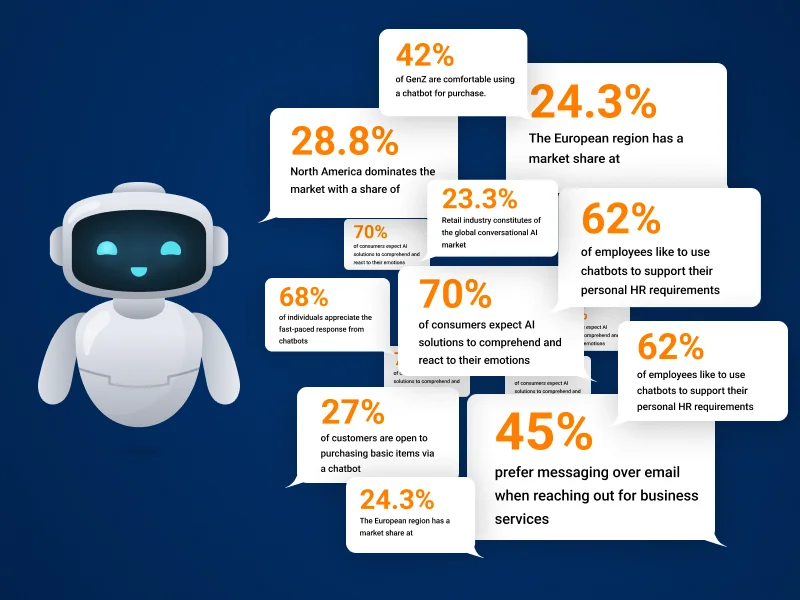Introduction: The AI Revolution in Customer Service
In today’s digital-first world, businesses are increasingly turning to AI-powered chatbots to streamline customer interactions, enhance support, and boost satisfaction. From retail and banking to healthcare and e-commerce, chatbots are transforming how organizations communicate with their customers — 24/7, cost-effectively, and at scale.
According to the latest market research, the global chatbot market is projected to reach USD 27.2 billion by 2030, growing at a CAGR of 23.3% (2023–2030). This massive surge is fueled by advancements in Natural Language Processing (NLP), Generative AI, and omnichannel integrations.
What Is Driving the Chatbot Market in 2025?
1. Generative AI and NLP Integration
- Tools like ChatGPT, Gemini, and Claude have redefined chatbot capabilities.
- Chatbots can now hold human-like conversations, understand sentiment, and offer context-aware responses.
2. Omnichannel Customer Experience
- Businesses now integrate chatbots into websites, mobile apps, WhatsApp, Facebook Messenger, and voice assistants.
- This ensures seamless and consistent engagement across platforms.
3. Cost Optimization and Operational Efficiency
- Chatbots reduce the burden on human agents, resulting in 30–50% cost savings on customer service.
- Instant support, fewer errors, and round-the-clock availability boost productivity.
4. Increased Use in E-commerce and BFSI
- In retail, chatbots assist with product recommendations, order tracking, and personalized offers.
- In banking and insurance, they handle KYC, fraud alerts, and account queries securely.

Key Players Dominating the Chatbot Landscape (2025)
🔹 SAP SE
- SAP’s AI-driven customer experience tools integrate with CRM, offering real-time chatbot support.
- Its chatbots are heavily used in enterprise resource planning (ERP) and supply chain management platforms.
🔹 Botpress
- An open-source conversational AI platform known for developer-friendly features and modular architecture.
- Botpress is gaining traction among startups and enterprises for custom, on-premise AI chatbot solutions.
🔹 Baidu
- China’s tech giant Baidu is revolutionizing the Asian chatbot market with ERNIE Bot, built on its proprietary LLM.
- Focused on Mandarin NLP, Baidu’s AI tools are widely adopted in government services, finance, and education sectors in Asia.

Emerging Trends in the Chatbot Market
| Trend | Insight |
| Voice Assistants | Voice-enabled chatbots are gaining popularity in healthcare and automotive industries. |
| Hyper-personalization | AI chatbots are now offering contextual, data-driven responses tailored to individual users. |
| Low-Code/No-Code Platforms | Democratization of chatbot development for businesses without technical teams. |
| AI + RPA (Robotic Process Automation) | Integration with RPA tools enables chatbots to perform backend tasks like invoice generation, appointment booking, etc. |

Challenges to Watch
- Data Privacy and Security: Growing concern about how customer data is stored, shared, and used.
- AI Bias and Misunderstandings: AI chatbots can still make errors in understanding complex, emotional queries.
- Integration Complexity: Aligning chatbots with legacy systems and CRMs remains a technical hurdle for some firms.

Conclusion: The Future Is Conversational
Chatbots have moved far beyond basic scripts. In 2025, they are smart, empathetic, and capable of driving real business value. Companies that invest in robust chatbot solutions today are not just saving costs — they’re building deeper, data-rich relationships with their customers.
Whether it’s SAP’s enterprise AI, Botpress’s open-source innovation, or Baidu’s regional dominance, the chatbot revolution is reshaping the future of customer service across the globe.


